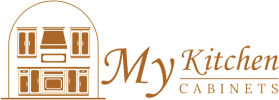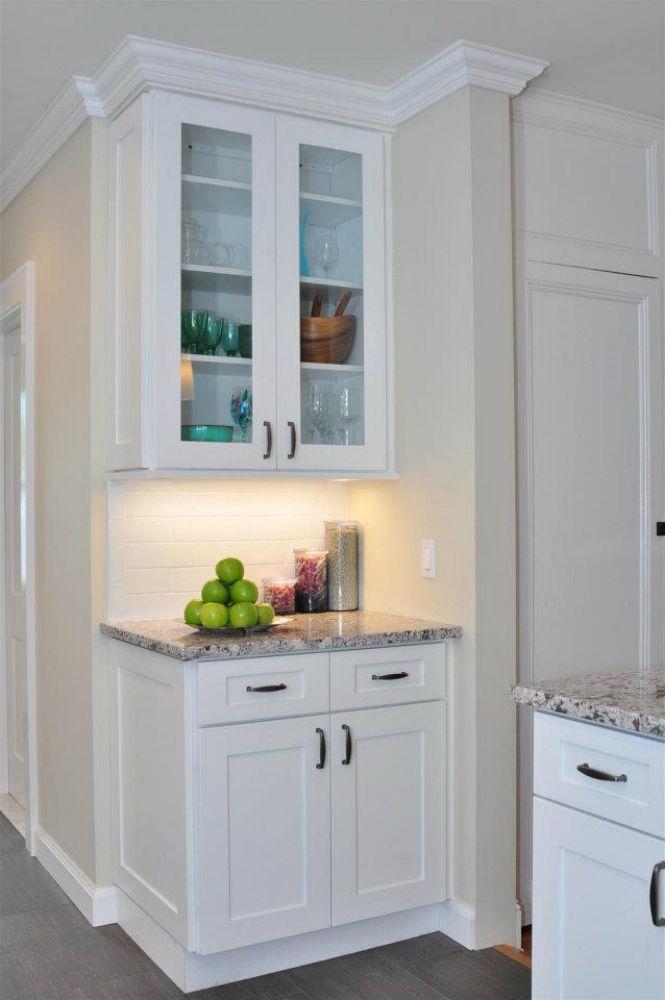The Do’s and Don’ts of Kitchen Cabinet Installation
Kitchen cabinet installation is a crucial step in any kitchen remodeling project. To ensure a successful and long-lasting installation, it’s essential to know the do’s and don’ts of this process. In this comprehensive guide, we will address the ten most frequently asked questions about kitchen cabinet installation to help you navigate this task with confidence.
1. How do I Prepare for Kitchen Cabinet Installation?
Proper preparation is key to a successful kitchen cabinet installation. Here are the essential steps to get you started:
Do’s:
- Measure your kitchen space accurately.
- Remove any old cabinets and fixtures.
- Check for level floors and walls.
- Ensure all necessary tools and materials are readily available.
- Plan the layout and design of your cabinets in advance.
Don’ts:
- Rush through the planning phase.
- Neglect to check for any electrical or plumbing work that may be needed.
- Overlook any structural issues that need to be addressed.
2. What Type of Cabinets Should I Choose?
Selecting the right cabinets is crucial for both aesthetics and functionality. Consider these do’s and don’ts when choosing your cabinets:
Do’s:
- Choose cabinets that match your kitchen’s style.
- Prioritize durability and quality materials.
- Opt for soft-close hinges and drawer slides for convenience.
- Explore various storage options to maximize space.
Don’ts:
- Settle for cabinets solely based on appearance.
- Sacrifice quality for a lower price.
- Forget to account for your storage needs.
3. How Should I Install Upper Cabinets?
Installing upper cabinets correctly is essential for safety and functionality. Follow these guidelines:
Do’s:
- Start with a level reference line for consistency.
- Secure the cabinets to wall studs.
- Use cabinet screws designed for the job.
- Check for proper alignment and spacing.
Don’ts:
- Overload upper cabinets with heavy items.
- Use drywall anchors for cabinet installation.
- Neglect to double-check levelness during installation.
4. What’s the Process for Installing Base Cabinets?
Proper installation of base cabinets is vital for a sturdy foundation. Follow these tips:
Do’s:
- Begin by marking the cabinet placement on the floor.
- Shim cabinets to ensure they’re level.
- Secure cabinets to each other.
- Confirm proper spacing for appliances and countertops.
5. How Can I Avoid Common Cabinet Installation Mistakes?
Mistakes during cabinet installation can be costly and time-consuming. Here are some do’s and don’ts to prevent common errors:
Do’s:
- Double-check measurements and levels at every stage.
- Use appropriate safety gear.
- Seek professional help if needed.
- Keep all hardware and fasteners organized.
Don’ts:
- Rush through the installation process.
- Neglect to follow manufacturer instructions.
- Assume all cabinets are perfectly square.
6. How Do I Ensure Cabinet Hardware is Installed Correctly?
Installing cabinet hardware, such as handles and knobs, is the finishing touch. Follow these steps:
Do’s:
- Measure and mark the correct placement for hardware.
- Use a template for consistent hole placement.
- Tighten hardware securely but not excessively.
Don’ts:
- Install hardware without careful measurement.
- Overtighten hardware, risking damage to cabinets.
7. Should I Hire a Professional Installer?
Deciding whether to hire a professional installer depends on your skill level and the complexity of the project. Consider these factors:
Do’s:
- Assess your own capabilities honestly.
- Seek recommendations and quotes from experienced installers.
- Hire a professional for complex or extensive installations.
Don’ts:
- Attempt a complex installation if you lack the necessary skills.
- Assume DIY is always the best option.
8. How Do I Care for and Maintain Kitchen Cabinets?
Once your cabinets are installed, proper care and maintenance are crucial for longevity. Follow these guidelines:
Do’s:
- Clean cabinets regularly with a mild detergent and soft cloth.
- Avoid abrasive cleaners and scouring pads.
- Fix any damage promptly to prevent further issues.
- Check and tighten hardware periodically.
9. Can I Customize My Cabinets After Installation?
Customization is possible even after installation. Here’s what you can do:
Do’s:
- Add shelves, dividers, or pull-out trays to increase functionality.
- Apply fresh paint or refinish cabinets for a new look.
10. How Do I Troubleshoot Common Cabinet Installation Problems?
If you encounter issues during or after installation, follow these steps to troubleshoot:
Do’s:
- Identify the problem accurately.
- Consult installation manuals or professionals for solutions.
- Take corrective action promptly to prevent further complications.
This guide covers the essential do’s and don’ts of kitchen cabinet installation. Whether you’re a seasoned DIY enthusiast or a novice, following these guidelines will help you achieve a successful and aesthetically pleasing result for your kitchen remodeling project. Remember that proper planning and attention to detail are key to a successful cabinet installation.
11. What are the Best Practices for Cabinet Door and Drawer Installation?
Installing cabinet doors and drawers correctly is essential for the functionality and aesthetics of your kitchen. Here are some best practices:
Do’s:
- Ensure that doors and drawers are aligned properly.
- Use adjustable hinges and slides to fine-tune the fit.
- Install soft-close mechanisms for added convenience.
Don’ts:
- Rush through the installation, resulting in uneven or misaligned doors.
- Overlook the importance of adjusting hinges and slides for a smooth operation.
12. How Do I Address Issues with Uneven Walls and Floors During Installation?
It’s not uncommon to encounter uneven walls and floors when installing kitchen cabinets. Here’s how to deal with these challenges:
Do’s:
- Shim cabinets as needed to make them level.
- Use scribes and filler strips to fill gaps between cabinets and uneven walls.
- Consider floor leveling compounds for uneven floors.
Don’ts:
- Ignore uneven surfaces, as this can lead to gaps and instability.
- Use excessive shimming, which can result in an unsteady installation.
13. What’s the Proper Sequence for Installing Appliances and Countertops?
Coordinating the installation of appliances and countertops with your cabinets is crucial for a seamless kitchen design. Follow this sequence:
Do’s:
- Install cabinets first, ensuring they are level and secure.
- Then, install appliances, such as ovens and dishwashers, based on your kitchen layout.
- Finally, measure and install countertops to fit precisely.
Don’ts:
- Install appliances before cabinets, as this can lead to fitting issues.
- Rush through countertop installation without proper measurements.
14. How Can I Ensure Adequate Ventilation for Cabinets with Built-In Appliances?
Proper ventilation is vital for cabinets housing built-in appliances like microwaves and ovens. Here’s what to do:
Do’s:
- Install ventilation fans or hoods as needed to vent heat and odors.
- Ensure there’s enough space around appliances for ventilation.
Don’ts:
- Block ventilation pathways with cabinets or other obstructions.
- Neglect to consider ventilation needs, which can lead to appliance overheating.
15. Can I Make Changes to the Cabinet Layout After Installation?
Making changes to the cabinet layout after installation can be challenging but not impossible. Consider these steps:
Do’s:
- Consult with a professional to assess the feasibility of changes.
- Be prepared for some level of disruption and potential additional costs.
- Consider aesthetic changes like repainting or refacing as alternatives.
Don’ts:
- Attempt major layout changes without professional guidance.
- Underestimate the complexity and cost of post-installation modifications.
16. What Are the Maintenance Tips for Different Cabinet Materials?
Cabinets come in various materials, and each requires specific maintenance. Here’s what to keep in mind:
Do’s:
- Follow manufacturer guidelines for cleaning and maintenance.
- Use appropriate cleaning products for your cabinet material, such as wood, laminate, or metal.
17. How Can I Maximize the Storage Space in My Cabinets?
Efficient use of cabinet storage is essential in any kitchen. Here are some tips to maximize space:
Do’s:
- Use pull-out shelves, lazy Susans, and drawer dividers.
- Consider cabinet organizers and inserts to create designated storage spaces.
- Group similar items together for easy access.
Don’ts:
- Neglect to organize cabinet contents, leading to clutter and inefficiency.
18. Can I Install Lighting Inside or Underneath My Cabinets?
Cabinet lighting can enhance both the functionality and ambiance of your kitchen. Here’s what you can do:
Do’s:
- Install under-cabinet lighting to illuminate countertops.
- Consider interior cabinet lighting for better visibility.
Don’ts:
- Overlook the importance of proper wiring and fixtures for cabinet lighting.
19. How Do I Ensure Cabinets are Safe for Children?
If you have children in your home, it’s crucial to make your cabinets childproof. Follow these safety measures:
Do’s:
- Install childproof cabinet locks and latches.
- Store hazardous items out of reach or in secured cabinets.
Don’ts:
- Neglect cabinet safety precautions, putting children at risk.
20. What Should I Do if I Encounter Unforeseen Challenges During Installation?
Unforeseen challenges are common in any home improvement project. Here’s how to handle them:
Do’s:
- Stay calm and assess the situation.
- Consult with professionals or experienced DIYers for solutions.
- Be prepared to adapt and make adjustments as needed.
Don’ts:
- Panic or rush through problem-solving, potentially making the situation worse.
By following the do’s and don’ts outlined in this guide, you’ll be well-prepared to tackle your kitchen cabinet installation project with confidence. Remember that patience, attention to detail, and proper planning are your allies in achieving a successful and aesthetically pleasing kitchen renovation.
Conclusion
In this comprehensive guide, we’ve covered the essential do’s and don’ts of kitchen cabinet installation, addressing the most common questions and concerns that homeowners often encounter. Whether you’re embarking on a DIY kitchen renovation project or working with professionals, these guidelines are your roadmap to a successful and aesthetically pleasing result.
To recap, we’ve discussed the importance of thorough preparation, from accurate measurements to addressing structural issues and considering electrical and plumbing needs. We’ve also explored the crucial decision of choosing the right cabinets, emphasizing quality, durability, and style.
The installation process for both upper and base cabinets has been thoroughly examined, with a focus on proper leveling, securing cabinets, and alignment. We’ve highlighted the significance of cabinet hardware installation, ventilation considerations for appliances, and the sequence for coordinating appliance and countertop installations.
Additionally, we’ve addressed post-installation concerns, such as making changes to the cabinet layout and ensuring proper maintenance for various cabinet materials. We’ve also explored ways to maximize storage space, add lighting, and ensure cabinet safety, especially in households with children.
Lastly, we’ve discussed how to handle unforeseen challenges that may arise during installation. The key takeaway is that patience, attention to detail, and a willingness to adapt are essential traits when tackling kitchen cabinet installation.
By following these guidelines and being aware of the do’s and don’ts, you can confidently navigate the complexities of kitchen cabinet installation, whether you’re a seasoned DIY enthusiast or relying on professional help. Your kitchen, often considered the heart of your home, will benefit from a functional and visually appealing transformation, adding value and comfort to your living space.


